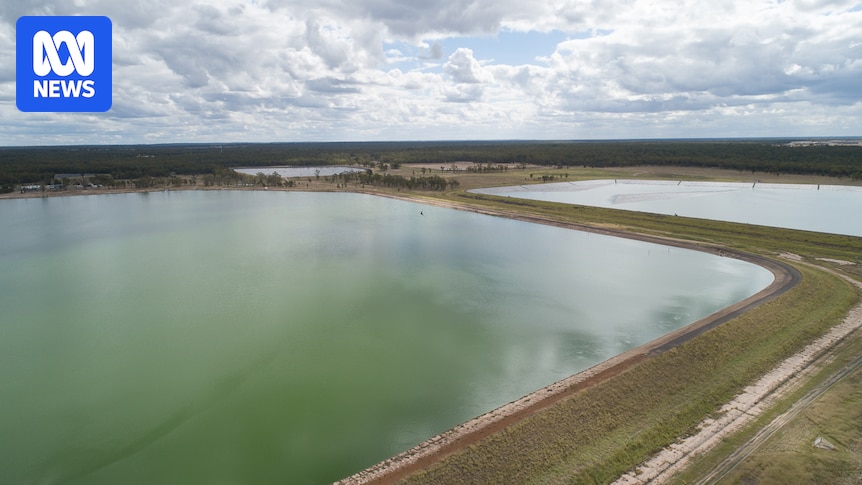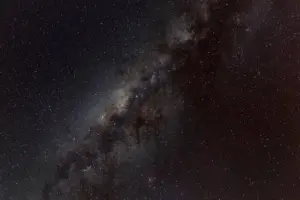
Elena Garcia has spent years observing the green salt ponds that dot Queensland’s Western Downs. As the coal seam gas (CSG) industry flourished around her, one of its most significant issues remained unresolved. “People think salt is fine — you use it at the table — but salt is a poison,” she remarked. “It kills the soil, and it stays there, and it never breaks down.” For Garcia, a cattle producer north of Chinchilla, and other landholders in the heart of Queensland’s CSG territory, the question of how to manage the industry’s vast salt waste is crucial. It is directly tied to the health of the land, water, and their future in the area.
Recently, a proposal emerged offering a solution: converting waste into commercially valuable chemicals like hydrochloric acid and caustic soda. Garcia expressed cautious optimism about the initiative. “It could be very exciting if it actually deals with the problem,” she said. “Because it seems insane to me that we approve an industry when we don’t know how to dispose of its waste safely.”
The Persistent Challenge of Coal Seam Gas Waste
CSG, a natural gas used in appliances and electricity production, requires groundwater to be pumped to the surface and separated. Much of this water is highly saline and unusable without processing. Despite commercial operations commencing in 1996 in Queensland’s Bowen Basin, the CSG industry still faces the daunting task of managing solid salt waste. Currently, salt is removed from groundwater using reverse osmosis plants or plastic-lined evaporation ponds, both generating waste brine or salt.
As Queensland’s CSG industry approaches its decommissioning phase, expected to begin as early as 2030, an estimated five million tonnes of brine waste will have accumulated. The “preferred” long-term storage method involves burying the waste salt in sealed landfill sites, a solution environmental experts deem risky. “Unless there is a long-term plan for ongoing continuous management of those landfills, they will eventually leak and impact the environment,” warned Professor Stuart Khan, an environmental engineer at the University of Sydney.
Salt can seriously damage soils, groundwater aquifers, and ecosystems.
Turning Waste into Opportunity
Queensland Brine Solutions (QBS), a subsidiary of ASX-listed Parkway Corporate Limited, believes it has a viable solution. The company has unveiled plans for a “waste brine-to-chemicals” conversion facility. Parkway’s managing director and CEO, Bahay Ozcakmak, stated that the project could revolutionize the industry’s approach to its problematic waste. “At full scale, this could be a billion-dollar development, and the chemicals it produces would be nationally significant,” he said.
QBS has secured a 10-hectare site southwest of Chinchilla and plans to submit its proposal to the state government soon. Subject to environmental approvals, construction could commence by mid-2026, with the facility being developed in four stages, each capable of processing 1.5 million tonnes of salt. The plant aims to convert brine into valuable chemicals like hydrochloric acid and caustic soda, essential for industries ranging from water treatment to rare-earth processing and alumina production. The process would also yield treated water suitable for nearby farms.
“We’re very focused on ensuring that the gas industry, local council, local community, stakeholders, and farmers feel like this is a long-term, sustainable development that will really help elevate the region,” Ozcakmak emphasized. However, about 2% of the waste stream remains untreatable and will still require disposal. Under the proposal, CSG operators would pay disposal fees to QBS, while the sale of “green chemicals” would provide an additional revenue stream.
Cautious Optimism and Future Implications
Whether gas companies will adopt this technology or continue burying waste until regulatory changes occur remains uncertain, according to Professor Khan. The oil and gas industry group, Energy Producers Australia, has been contacted for comment. Khan also noted that ventures competing with low-cost imports often struggle to remain commercially viable, citing the closure of the Penrice soda ash plant in Adelaide in 2014 as an example.
Professor Khan remarked that government responsibility for the current situation is “long overdue.” “They’re aware of the problem, but they have felt they’ve been prepared to go ahead and approve these projects without having those waste management solutions in place,” he said.
This industry has been expanding and just storing a lot of their waste materials waiting for a solution to come by. A project like this is desperately needed and at least a decade overdue.
Western Downs Mayor Andrew Smith also sees potential in the proposal. “Waste brine produced by CSG operations presents complex environmental and economic challenges, but this type of innovative technology, turning industrial waste into useful products, presents potential solutions,” he stated.
For residents like Elena Garcia, even the possibility of a safer long-term option is significant. “If this plant can deal with the CSG waste entirely, it’s better than the salt dump,” she said. As the industry and stakeholders consider this innovative proposal, the future of waste management in Queensland’s CSG sector hangs in the balance, with the potential to transform environmental challenges into economic opportunities.







